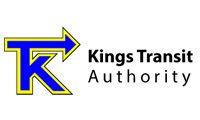Let's shed some light on your search




PURPOSE:
The purpose of Municipality of the County of Annapolis Water Works Standards Manual is to define Development Planning, Engineering Design and Construction Standards for the development of public water works within the Municipality.APPLICATION:
The specifications herein apply to the development of publically owned water works in the Municipality of the County of Annapolis.DESIGN STANDARD:
Water Supplies:
Water Supplies shall include any surface or groundwater sources.Water supplies shall have the capacity to satisfy design demands under conditions created in a one-in 50 year return frequency drought (i.e. a drought that can be statistically projected to occur only once every 50 years).
Water Supplies shall have the capability of producing water with a quality that consistently meets or exceeds the Canadian Drinking Water Guidelines.
Water Supplies shall be designed and developed in accordance with the standards of the Nova Scotia Department of the Environment and shall receive the approval of the Department of the Environment.
Notwithstanding the receipt of the approval of the Nova Scotia Department of the Environment, designs related to Water Supply development, including wells, surface water intakes, pumping, treatment and storage systems shall be submitted to and shall be required to receive the written approval of the Municipal Engineer.
Water Transmission Systems:
Water Transmission Systems shall include any pipeline or conduit intended to transport treated or untreated water from a Water Supply to a Distribution Network or a Distribution Reservoir.In the situation where the Water Transmission System is proposed to deliver water from a Water Supply to a Distribution Reservoir or a Distribution Network, within which a Distribution Reservoir is located, the Transmission System shall be capable of transporting water at the maximum daily demand rate or 1.4 times the average daily demand rate, whichever is greater.
In a situation where a Water Transmission System is proposed to transport water from a Water Supply to a Distribution Network which does not contain a Distribution Reservoir, the Transmission System shall be capable of transporting water at the maximum daily demand rate plus the Fire Flow Rate as recommended by the Insurers Advisory Organization.
Transmission Systems elements (pipelines, etc.) shall be structurally designed in accordance with the applicable American Water Works Association (AWWA) standards.
Shut off valves shall be installed at a spacing not exceeding 2000 lineal feet on Transmission Systems.
Reservoirs:
Two types of Reservoirs are acknowledged.Distribution Reservoirs are intended to store water within or on the periphery of a Distribution Network. Distribution Reservoirs shall be designed to contain a minimum of four days of average daily demand emergency storage or 25 % of the maximum daily demand plus Fire Protection storage (calculated in accordance with the recommendations of the Insurers Advisory Organization), whichever is the greater.
Supply Reservoirs are intended to store water at a water supply for the purposes of supporting a treatment process (e.g. filter backwash). Supply Reservoir capacity shall be designed in accordance with requirements associated with their purpose.
Where a single reservoir functions as both a Supply Reservoir and a Distribution Reservoir, the reservoir shall be designed with the capacity to store water to satisfy the sum of the functional requirements.
Distribution Networks:
A Water Distribution Network is defined as an arrangement of pipes and fittings intended to distribute water to consumers and/or fire hydrants from a Water Transmission System and/or a Distribution Reservoir.Unless specifically approved by the Municipal Engineer, in writing, all Distribution Networks shall be capable of delivering both the required fire flows and water for normal demands.
For the purpose of fire protection, Distribution Networks shall be configured and designed to deliver water to hydrants at rates and pressures that are consistent with the recommendations of the Insurers’ Advisory Organization (IAO). Under non-fire demand conditions, the Distribution Network shall deliver water to customers within a pressure range of 45 to 80 pounds per square inch, measured in the water main at the customers service connection.
Wherever feasible, water mains in a Distribution Network shall be looped and no “dead end” water mains developed, unless expressly approved by the Municipal Engineer, in writing.
Water main valves shall be located at a spacing of not more than 150 metres. All water mains with potential (in the opinion of the Municipal Engineer) to be extended in the future shall be terminated with a gate valve and one length of water main beyond the valve. The gate valve shall be restrained by a tie-back system (as opposed to a terminal thrust block).
Each water service lateral shall be equipped with a curb stop or shut off valve located at the edge of the right-of-way in which the water main is located. Each water service lateral shall be installed with a minimum 3 metre long pipe extension beyond the curb stop/shut off valve.
Water mains and service laterals shall be installed a minimum distance of 1.4 metres below final ground elevation, or below a temporary finished ground elevation, if the temporary condition is expected to exist for one or more winter seasons.
CONSTRUCTION STANDARD:
Water Works shall be constructed in accordance with the provisions of the Standard Specification for Municipal Services, as produced jointly by the Nova Scotia Consulting Engineers Association and the Nova Scotia Road Builders Association.Upcoming Events
| Planning Advisory Committee Meeting 12 Jan 2026 06:00PM |
| Nominating Committee Meeting 13 Jan 2026 |
| Committee of the Whole Meeting 13 Jan 2026 10:00AM |
| Regular Municipal Council 20 Jan 2026 10:00AM |
| Public Hearing - Municipal Heritage Deregistration 20 Jan 2026 11:00AM |
New Information to This Site
- Employment Opportunity - Facility and Parks Labourer
- Employment Opportunity - Building/ Fire Official (Level 1)
- Employment Opportunity - Manager of Municipal Operations
- A Heartfelt Thank You - West Dalhousie Wildfire
- Council Highlights - December 16, 2025
- County Wide Planning Area
- 2025 Municipal Offices Holiday Hours
- Holiday Greetings from Warden Diane LeBlanc
- VWRMA - New Recycling Program
- East End Planning Area
- COUNCIL HIGHLIGHTS - November 18, 2025
- County of Annapolis Community Grant Information Sessions













